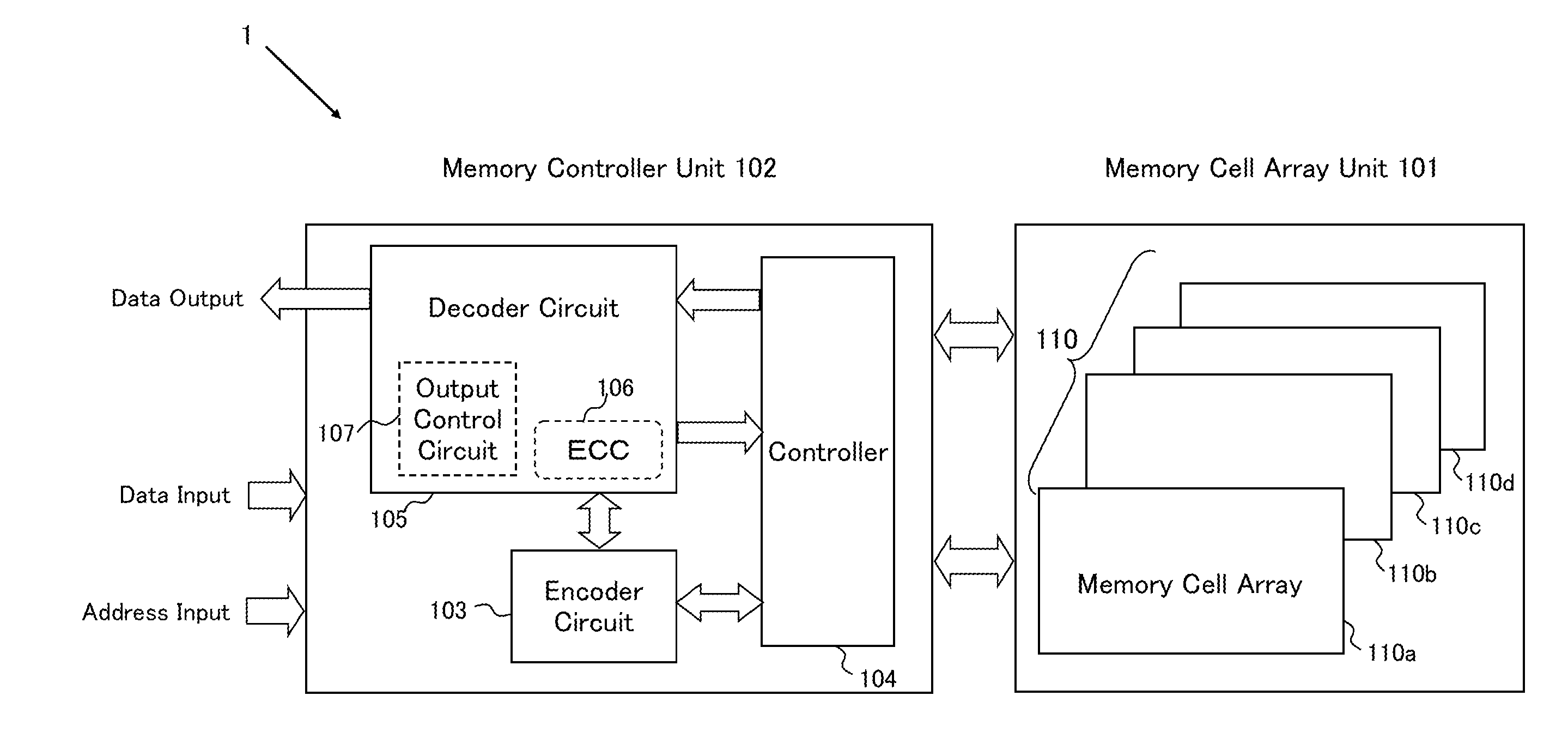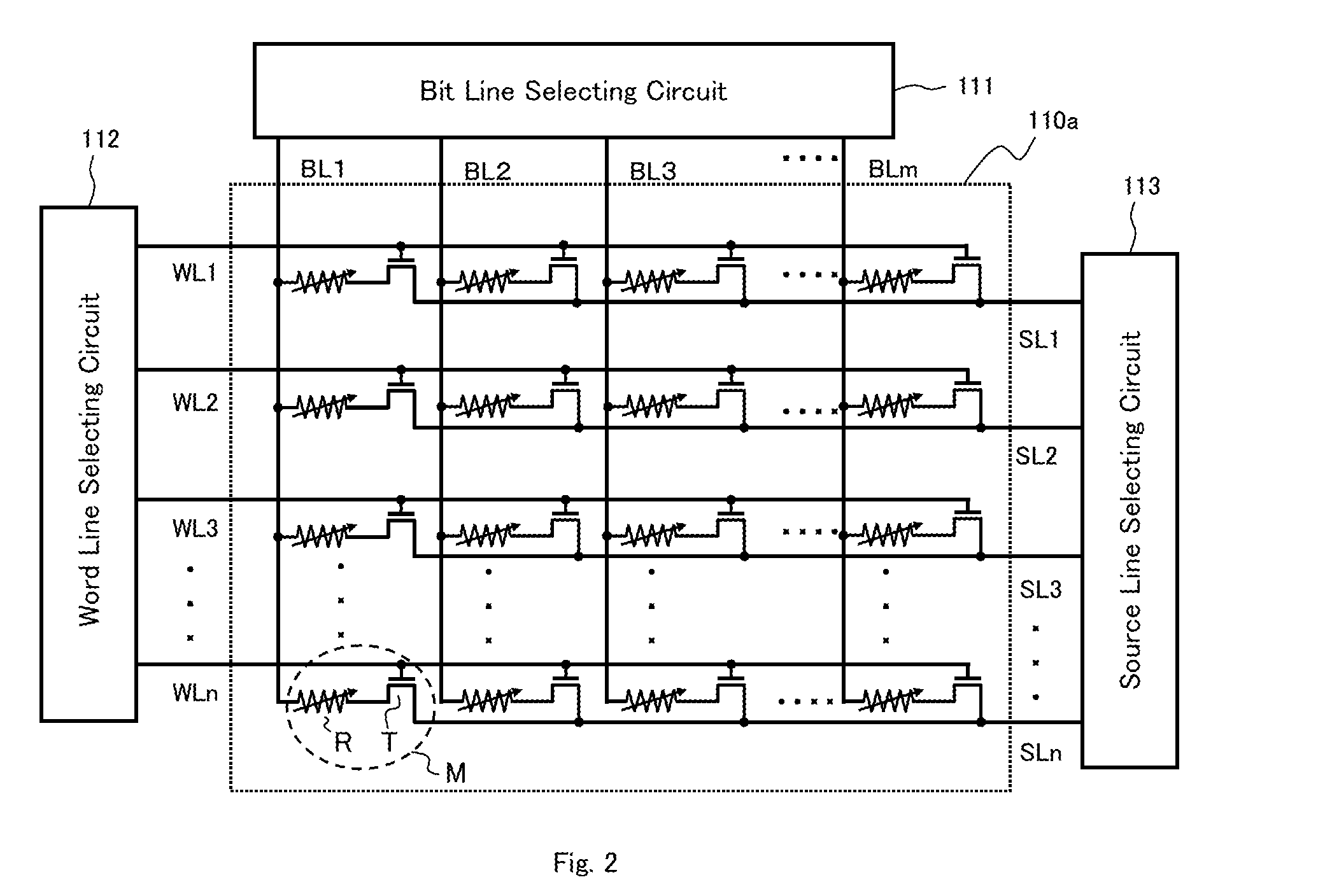Semiconductor memory device
- Summary
- Abstract
- Description
- Claims
- Application Information
AI Technical Summary
Benefits of technology
Problems solved by technology
Method used
Image
Examples
first embodiment
[0069]FIG. 1 shows a schematic circuit structure of a semiconductor memory device (hereinafter appropriately referred to as a “present device 1”) according to one embodiment of the present invention. The present device 1 basically includes a memory cell array unit 101, and a memory controller unit 102. The memory controller unit 102 includes an encoder circuit 103 that performs error-correction coding for adding an error-correction check bit to a plurality of information bits, which are input data, and generates coded data having a bit length longer than that of the information bits; a controller 104 that controls a writing action and a reading action of the coded data to a memory cell in the memory cell array in the memory cell array unit 101 specified by an input address; and a decoder circuit 105 that decodes the coded data (information bits+check bit) read through the controller 104, detects whether the decoded data has an error or not, and corrects the error. The decoder circui...
second embodiment
[0100]The method of detecting the error in the coded data and the method of the correction and writing by the present device 1 will be described with reference to another flowchart in FIG. 8. In the flowchart in FIG. 8, a check bit that is generated by coding the read information bits and the read check bit are compared after the reading action and before the decoding action in order to detect an error. When both check bits are consistent with each other, it is determined that there is no error, so that the error correction is not executed. Only when both check bits are not consistent with each other, the decoding action is executed to specify an address having the data error based upon the error-correction coding.
[0101]Firstly, in FIG. 8, when the address of the memory cell, which is the target of the reading action, is inputted to the memory controller unit 102 (step #300), the controller 104 in the memory controller unit 102 specifies the plurality of memory cells corresponding t...
third embodiment
[0107]As described above, when the data error is detected in the error detection action by the ECC, the present device 1 executes the first writing action to the memory cell in the memory cell array on the address where the error is detected based upon the error-correction coding. On the other hand, when the device is operated under high temperature for a long time, the possibility that an error is detected on a bit with a weak data retention increases.
[0108]FIG. 9 shows a data retention characteristic at high temperature after the resistance state is changed to the low resistance state by the first writing action in the form of a change in a cumulative probability of an error bit that cannot retain data due to an increase in the resistance value. This experiment was carried out to the variable resistive elements R corresponding to 256 bits, each of which has titanium nitride (TiN) as the first electrode, tantalum (Ta) as the second electrode, and a variable resistor that is made of...
PUM
 Login to View More
Login to View More Abstract
Description
Claims
Application Information
 Login to View More
Login to View More - R&D
- Intellectual Property
- Life Sciences
- Materials
- Tech Scout
- Unparalleled Data Quality
- Higher Quality Content
- 60% Fewer Hallucinations
Browse by: Latest US Patents, China's latest patents, Technical Efficacy Thesaurus, Application Domain, Technology Topic, Popular Technical Reports.
© 2025 PatSnap. All rights reserved.Legal|Privacy policy|Modern Slavery Act Transparency Statement|Sitemap|About US| Contact US: help@patsnap.com



